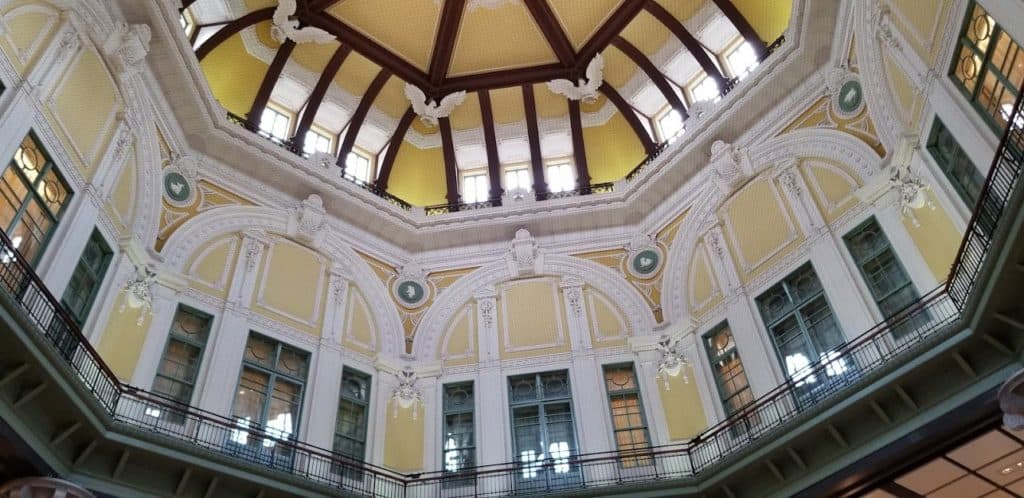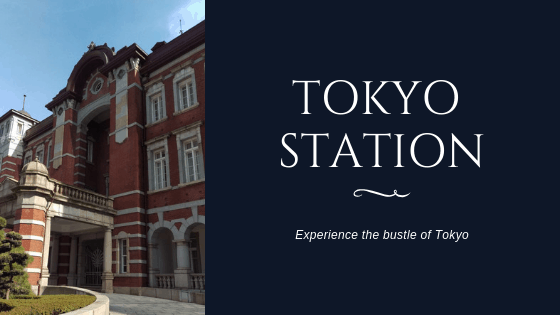If you are visiting Tokyo (come on, that’s a must-see!), you’ll likely find yourself at Tokyo Station. Servicing mostly JR East Rail lines with underground passages and quick walks to more, you may think of it as just a major transit hub but don’t let it fool you.
Located near the Imperial Palace and Ginza shopping districts, Tokyo Station boasts a beautiful architectural design that is a popular place for portraits and architectural photography. But it is so much more!
[Editor’s Note: This post was originally published in November of 2016 and has been updated for freshness, accuracy, and comprehensiveness.]
Disclosure: Kristenabroad.com is a participant in the Amazon Services LLC Associates Program and other affiliate programs. For some links to products or services in this article, I may earn a small commission by you using my link. The price for you is not affected.
Tokyo Station Basics
There are 14 platforms with 28 track lines in Tokyo Station, add that with all the other goodies and you get an area of 182,000 square meters it’s easy to get lost! 4000 trains pass through Tokyo Station every day making it one of the busiest in the country. Many of the JR lines connecting to the rest of Japan “start” at Tokyo Station. How can you tell? The station numbering has them at Station 1! The two main gates are Marunouchi on the West and Yaesu to the East.
Tokyo Station originally opened in 1914 but WWII air raids damaged it and the post-war rebuild knocked off the top floor. It wasn’t until a recent reconstruction effort that it was brought back to its former glory, including the full third floor.
The domes on the Marunouchi North and South exits are 27 meters high and a must-see. Make sure to look out for the detailed zodiac features!

Yaesu Gate was renovated in 2013 and has a cool sail-like aesthetic. It is the closest to the Shinkansen terminal.
The station building is designated an important cultural property and it has something nothing else with that designation has.
What’s that? A hotel. A very, nice looking, I want to stay it, hotel. It’s called the Tokyo Station Hotel and it’s been part of the station since 1915. However, it’s so seamless that you won’t notice it if you aren’t looking for it.
The hotel restaurant and bar are open to the public. They have a signature drink that’s been made by the head bartender for 30 years called “Tokyo Station” that is on my list of things to try.

Train lines Serviced from Tokyo Station
If you are taking the train in Japan and around Tokyo, Tokyo Station has a plethora of options. Though not as well-trafficked as some of the Tokyo area stations, keep in mind though, this is a BIG station. The distance between two separate lines can push close to 1 km.
A good thing to note if you are heading to Tokyo Disney (the MiraCosta Hotel is well worth the splurge by the way!), the Keiyo Line is a long walk from the other lines!
- Akita Shinkansen (秋田新幹線)
- Hokkaido Shinkansen (北海道新幹線)
- Hokuriku Shinkansen (北陸新幹線)
- Joetsu Shinkansen (上越新幹線)
- Tohoku Shinkansen (東北新幹線)
- Tokaido Shinkansen (東海道新幹線 which includes the Hayabusa, Japan’s fastest shinkansen!)
- Yamagata Shinkansen (山形新幹線)
- Chuo Main Line (中央本線)
- Keihin–Tohoku Line (京浜東北線)
- Keiyo Line (京葉線)
- Marunouchi Line (丸ノ内線)
- Sobu Main Line (総武本線)
- Tokaido Line (東海道線)
- Ueno–Tokyo Line (上野東京ライン)
- Yamanote Line (山手線)
- Yokosuka Line (横須賀線)
Tokyo Station to Narita Airport
Heading to Narita International Airport? The Narita Express services Tokyo Station and for a cheaper option, the Yokosuka Line also has a train that goes the entire distance.
Side Note: JR Passes
Before you come to Japan, you should check out the JR (Japan Railway) Rail passes and decide if it will be worth you to get one. JR Lines expand to all reaches of Japan. Though not the only transport you’ll need (think private lines and metros, for which I highly suggest a Pasmo or other IC card), the pass can save you money if you’re going to be doing a lot of train travel and makes getting around Japan easier.
The biggest benefit is instant access to the 新幹線 (shinkansen, or bullet train). The pass (depending on length) normally pays for itself with just one trip on the shinkansen. A more dedicated post to come in the future.
Things to do in Tokyo Station
Underground, the system of hallways boasts a large shopping area and food eateries. If the weather is bad, you can use this network to reach specific businesses in the area — without ever stepping a foot outdoor! Watch out for the signage everywhere and you’ll have no problem finding a different platform or area of interest inside or out!
There are multiple different shopping areas inside Tokyo station. If you are here on a tourist visa, look out for the tax-free office that if you show your passport upfront you don’t have to worry about getting taxes reimbursed after the fact. If you are looking for any number of character souvenirs, like Studio Ghibli, there are tons on the first basement floor.
If you haven’t gotten enough ramen yet (I’m personally a huge fan of the spicy ramen options in Tokyo), there is a Tokyo Station Ramen Street within the station that has 8 shops including one that has vegan ramen and gluten-free options. While it doesn’t have the “Epcot-like” feel of the Ramen Museum in Yokohama, it still has 8 different ramens to check out all in one spot!

Tokyo Station surrounding Neighborhoods
The two closest neighborhoods to Tokyo Station with exits to match are the Marunouchi district to the West and the Yaesu district to the east.
Marunouchi is a bustling business district and the direction you will be heading for Edo Castle and the Imperial Palace. The name harkens to when this area was within the castle walls, which if you’ve read my post on everything Japanese castles, you’ll have a better idea about!
If you want a nice overhead view of the station head to the Kitte Department Store across the street. Kitte comes from the word for “postage stamp” and is fitting as this is the old post office building. On top, there is a free garden that you can see the station from!
The Yaesu side also has plenty of shops and dining and is closer to the shinkansen lines – not aforementioned mention to the size of the station! If you are leaving early on the Hayabusa Shinkansen heading to Aomori for a weekend trip from Tokyo, best to look for a hotel over on this side! And while Yaesu sounds like a Japanese word, it is actually named after a famous Dutchman for his service of the Tokugawa regime.
Close by, if you would prefer to get some exercise is the famous shopping district of Ginza to the south and just a bit north will take you to Kanda, one of my favorite areas for izakayas.
Tell me about your experiences
Have you been to Tokyo Station? Where’s your favorite station in the world? I’d love to hear about your experience in the comments below!
